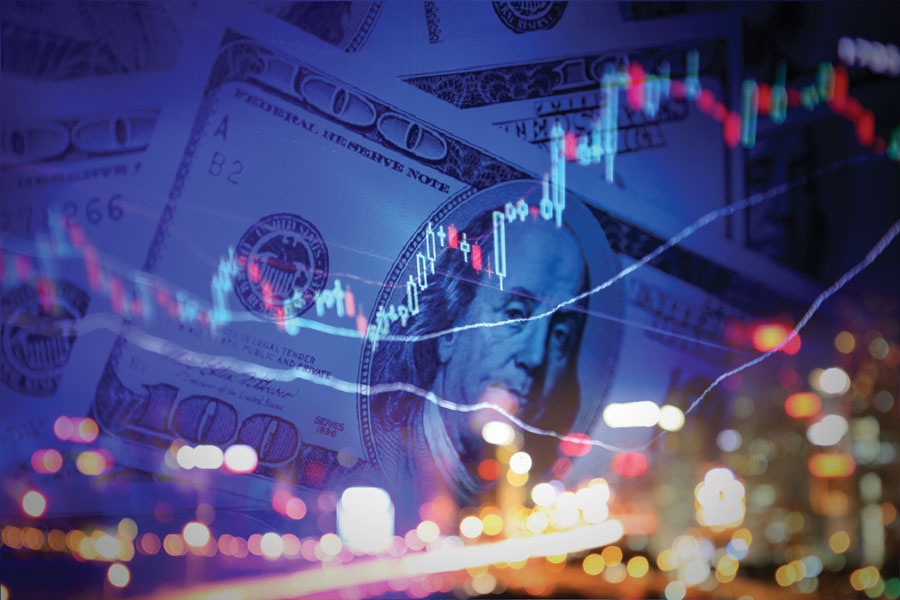

Momentum traders and a surge in corporate buybacks promise to drive a US stocks rally over the next four weeks, according to Goldman Sachs Group Inc.’s trading desk.
“The pain trade for equities is higher and the bar for being bearish at the beach into a Labor Day barbecue party is high,” Scott Rubner, managing director for global markets and tactical specialist at the bank, wrote in a Monday note.
Rubner, who correctly predicted a late summer correction and advised in late June to trim exposure in US stocks after July 4, has turned tactically bullish saying current positioning and flows “will act as a tailwind as sellers are out of ammo.”
Gains in stocks can be fueled by flows from the so-called trend-following systematic funds. Such funds are back to releveraging after cutting their total long exposure from $450 billion in July to $250 billion currently. That flow of funds demand will have a larger impact when adjusted for August’s lower liquidity.
This is good news for investors trying to figure out the stock market’s direction after an abrupt selloff in early August attracted dip buyers, fueling the biggest buying opportunity this year. But Rubner says risk-on momentum won’t stop there: after a volatile stretch leading to the November presidential election, the S&P 500 Index may rally to 6,000 toward year-end — roughly an 8% gain from Friday’s close.
Rubner sees a so-called “green sweep” from commodity trading advisers, or CTAs, with funds likely to be buying stocks no matter which direction the market goes. And volatility-control funds — which position themselves in opposition to realized volatility — are expected to boost their exposure after the Cboe Volatility Index posted its biggest nine-day volatility decline in history.
On top of that, traders are long gamma again, meaning they are essentially going against the prevailing trend and buying stocks as they fall and selling as they rise. That should act as a market buffer with dip buyers emerging in case of any selloff. Dealer gamma changed by $16 billion over the past three weeks going from long to short to long again. “That’s the largest change in our dataset,” Rubner wrote.
Corporate demand will also act as a tailwind. Goldman estimates $6.62 billion of daily purchasing power until the corporate blackout window closes for some 50% of firms on Sept. 13. In total, the bank estimates corporate buybacks total $1.15 trillion worth of authorizations and $960 billion worth of executions in 2024.
He also expects more cash from the money market to be deployed in equities. Current US money market assets under management are about $7.3 trillion, he noted. “Money market yields are starting to materially decline, this mountain will start to get deployed elsewhere after the US election.”
However, there could be more dips ahead. Rubner warned that after Sept. 16, the stock market could once again turn negative. The second half of September has historically been the worst two-week trading period of the year and “I will not stick around for this,” he wrote.
Stocks posted small moves Monday after a risk-on rally saw the S&P 500 notch its best week this year on Friday. Traders are now turning their attention to the Federal Reserve’s annual gathering in Jackson Hole for potential clues on interest-rate cuts and earnings form Target Corp. and TJX Cos that could provide more signs on the health of American consumers.

While industry statistics pointing to a succession crisis can cause alarm, advisor-owners should be free to consider a middle path between staying solo and catching the surging wave of M&A.

New joint research by T. Rowe Price, MIT, and Stanford University finds more diverse asset allocations among older participants.

With its asset pipeline bursting past $13 billion, Farther is looking to build more momentum with three new managing directors.

A Department of Labor proposal to scrap a regulatory provision under ERISA could create uncertainty for fiduciaries, the trade association argues.

"We continue to feel confident about our ability to capture 90%," LPL CEO Rich Steinmeier told analysts during the firm's 2nd quarter earnings call.
Orion's Tom Wilson on delivering coordinated, high-touch service in a world where returns alone no longer set you apart.
Barely a decade old, registered index-linked annuities have quickly surged in popularity, thanks to their unique blend of protection and growth potential—an appealing option for investors looking to chart a steadier course through today's choppy market waters, says Myles Lambert, Brighthouse Financial.
